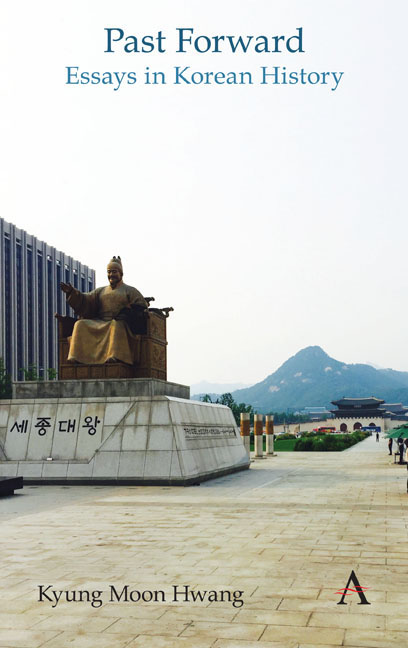Book contents
- Frontmatter
- Contents
- List of Figures
- Foreword
- Chronologies of Korean History
- Themes
- Acknowledgments
- Note on Romanization and Spelling
- Part I Circulating History
- Part II Durable Traditions
- Part III Ancient Remains
- Part IV Dynastic Depths
- Part V Modern Origins
- Part VI Challenges of Nationhood
- Part VII History Makers
- Part VIII External Presences
- Part IX Trials of Modernization
- 62 Summer Symmetries
- 63 The Korean War as a Turning Point
- 64 The Students of April
- 65 The Four Ds of South Korean History
- 66 Two Assassinations
- 67 Roads to Revolution
- 68 Dramatizations of the Gwangju Uprising
- 69 The Great Labor Uprising of 1987
- Part X Gripped by the Past
- Index
62 - Summer Symmetries
from Part IX - Trials of Modernization
- Frontmatter
- Contents
- List of Figures
- Foreword
- Chronologies of Korean History
- Themes
- Acknowledgments
- Note on Romanization and Spelling
- Part I Circulating History
- Part II Durable Traditions
- Part III Ancient Remains
- Part IV Dynastic Depths
- Part V Modern Origins
- Part VI Challenges of Nationhood
- Part VII History Makers
- Part VIII External Presences
- Part IX Trials of Modernization
- 62 Summer Symmetries
- 63 The Korean War as a Turning Point
- 64 The Students of April
- 65 The Four Ds of South Korean History
- 66 Two Assassinations
- 67 Roads to Revolution
- 68 Dramatizations of the Gwangju Uprising
- 69 The Great Labor Uprising of 1987
- Part X Gripped by the Past
- Index
Summary
It has now been well over a century since Korea was last ruled by a single, native political system, and well over seven decades since liberation from Japanese colonial rule, which was declared on August 15, 1945. But did Korea truly gain liberation? This has been a nagging question since nearly the beginning, for it quickly became clear, after the initial euphoria, that one foreign ruler would be replaced by another.
The partition of the peninsula by the occupying Allied armies in the summer of 1945 would eventually lead to the eruption of the Korean War five summers later in June 1950. After millions of deaths, the armistice of July 1953 halted the fighting and solidified the national division that we still have today. This painful summer symmetry has always dampened a bit the annual observance of Liberation Day, or the “restoration of light” holiday (Gwangbokjeol). The connections between these events, after all, are inescapable. But in what way?
If Koreans had known back in 1945 that liberation would result in permanent national division, would they still have welcomed it? This is not a fair or realistic question, of course, but I would think that yes, most would have preferred such an outcome over the continuation of Japanese rule. Furthermore, while citizens of North Korea today might not share this view (one can never know), many if not most South Koreans see little room for uncertainty here. For them, the Korean War and national division were tragedies, to be sure, but over the long term, the “restoration of light” nourished the growth of a modern, free society, at least in the south.
To those who subscribe to this “brighter” view of liberation, August 15 should invite a double celebration, not only of freedom from Japanese rule in 1945, but also of the founding (geonguk) of the Republic of Korea, or South Korea, on the same date in 1948. In a ceremony filled with irony, on that day the government of South Korea was formally established in front of the huge building that had served as the headquarters of the Japanese colonial regime and the subsequent American military government. Symbolically, then, South Korea was being launched as the successor to those earlier states more than as a clean break from them.
- Type
- Chapter
- Information
- Past ForwardEssays in Korean History, pp. 181 - 182Publisher: Anthem PressPrint publication year: 2019

